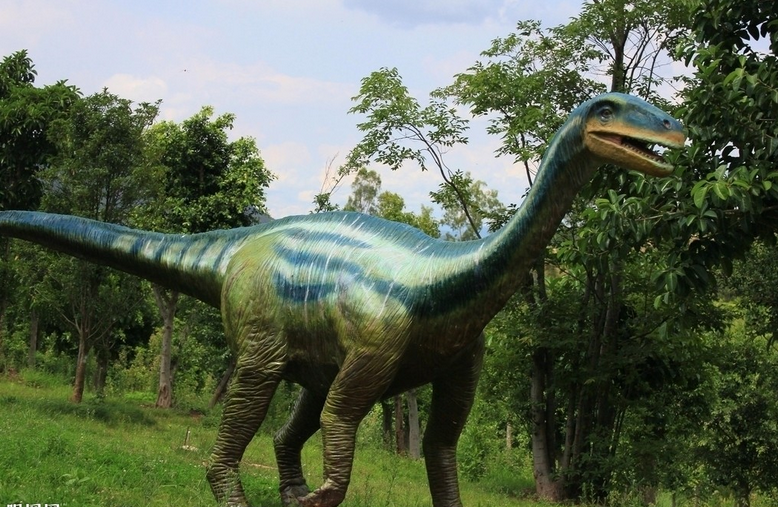(单词翻译:单击)
Then, Ostrum's crew made another discovery - lying next to the Raptor was a second skeleton.
紧接着,奥斯特伦姆的团队有了另一个发现,在迅猛龙旁边还有第二具骸骨。
Two Raptors, side by side.
两头迅猛龙紧挨着。
But the second Raptor's bones had been crushed, They continued to dig.
但第二头迅猛龙的骨头已经碎裂,他们继续挖掘。

Then, just a few feet away, a third carcass.
仅在几英尺远处发现了第三具骸骨。
This one too, had crushed bones.
而这一具的骨头也是碎裂的。
Paleontologists realized they were looking at a fight, one involving at least three Raptors.
古生物学家们意识到它们是在争斗,至少有三头迅猛龙参与了这场战斗。
Whenever you find a large number of the same species of dinosaurs lying together, mixed up, it's a pretty good indication that they died at the same time.
当你发现了大量同种恐龙杂乱的叠在一起,这就说明是在同一时间死亡的。
This is common in plant eating dinosaurs, but very rarely do we find predators this way.
这对植食恐龙来说很常见,但掠食者这样还是很少见的。
Finding a group of Deinonychus is a very good indication of pack hunting.
发现一群恐爪龙是它们群体狩猎的有力证据。
Buried only a few yards away, its skeleton sprawled in a death pose, a fourth Raptor.
接着,在几码远之外找到了一具趴着死掉的骸骨第四头迅猛龙。
This site was a prehistoric battlefield, with several Raptors involved.
这里曾是史前的战场,而且有多头迅猛龙参与。
Paleontologists had always wondered if Raptors hunted in packs.
古生物学家一直想知道迅猛龙是否是群体猎食的。
Well, Doctor Ostrum's discovery in Montana of these four Deinonychus answered that question.
奥斯特伦姆博士在蒙大拿州发现的四具恐爪龙骸骨解开了这一谜题。
These Raptors lived and died as a group.
因为这是一群同生共死的迅猛龙。
The Raptors were relatively small predatory dinosaurs, not much larger than a man.
迅猛龙是相对体型较小的掠食恐龙,比成年人大不了多少。
They were a couple of meters high, about three meters long, and weighed close to 150 pounds.
它们站立时高两米,大约三米长,体重约七十公斤。
But what they lacked in size, they more than made up for in agility.
虽然体型有所不足,但它们靠敏捷可以完全弥补。
Dr. Ostrum was quick to identify three deadly attributes that were used in the battle.
奥斯特伦姆博士很快查出了它们在争斗中使用的三件致命武器。
The first were its teeth.
其一是它们的牙齿。
These teeth curve backwards.
这些牙齿向后弯曲。
Teeth that curve backwards are designed to grab and hold on to something that is struggling to get away.
牙齿向后弯曲是为了咬住并紧抓不放,使猎物无法脱身。
Not only are their teeth curved backwards, they're serrated on both edges.
它们的牙齿不仅向后弯曲,而且两边的还呈锯齿状。
They've got a mouth full of steak knives.
它们满口都是牛排刀般的牙齿。
What it would do is it would get a hold of something, and then it would jerk its head backwards,
它们用这一武器先抓牢猎物,然后把头猛然向后拉,
and that's when the curvature of the teeth would cause all of these little teeth to act like serrated hooks,
这时候这些弯曲的小牙齿起到的作用如同有锯齿的挂钩,
and they would just tear out a big chunk of meat.
它们就能扯下大块的肉。


